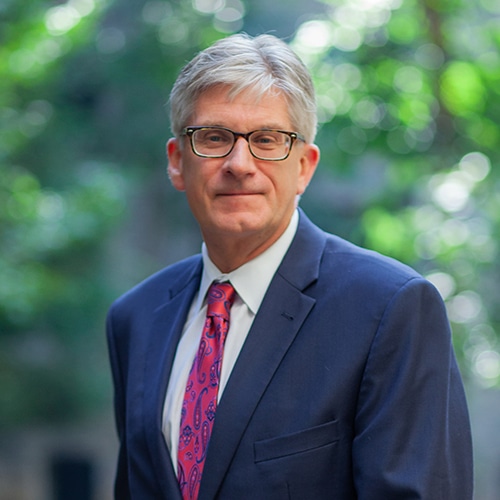When a Public Forum Exists in the Palms of Your Hands: First Amendment and Social Media for Local Governments
Exercise of free speech in public places is so inherent and important to our democracy that the first Congress of the United States enshrined freedom of speech amongst the Bill of Rights in the First Amendment to the Constitution. As Frederick Douglass noted, “No right was deemed by the fathers of the Government more sacred than the right of speech. It was in their eyes, as in the eyes of all thoughtful men, the great moral renovator of society and government.” With the evolution of technology and the rise of social media, free speech issues have extended from parks, public buildings, and town squares directly into the hands of constituents through Facebook and other forms of social media available on electronic devices including phones, tablets, and computers. Social media and its utilization by governments and constituents is not a new phenomenon, but the highly publicized litigation surrounding former President Donald Trump’s use of Twitter, 1 and the two cases for which oral arguments were presented to the United States Supreme Court in October 2023, have brought the issue to the forefront.
What Does the First Amendment Protect?
The First Amendment provides that “Congress shall make no law…abridging the freedom of speech, or of the press; or the right of the people peaceably to assemble, and to petition the Government for a redress of grievances.” This gives protection against government action that infringes a person’s freedom of speech. However, the definition of “freedom of speech” is not clear from the text of the First Amendment.
The following are some general rules for speech that is (and is not) protected that can be relevant in the context of social media, however, these rules are not always clear and may depend on interpretation by the courts:
- The First Amendment protects hate speech from governmental censorship unless the speech incites or is likely to
incite imminent lawless action. - It protects pornography from government censorship unless it is “obscene.”
- It protects false statements of fact that do not damage others’ reputations.
- The First Amendment does not protect true threats (though some anti-bullying laws have been struck down).
The First Amendment also protects against discrimination by a government based on the content of the speech. Governmental regulation based on content of speech is presumptively unconstitutional and subject to “strict scrutiny.” In order to satisfy strict scrutiny review, the law must serve a compelling governmental interest and the regulation that is being implemented must use the least restrictive means to do so. In contrast, content-neutral laws, such as time, place, and manner restrictions, are afforded intermediate scrutiny. For intermediate scrutiny, the government must show that the law furthers an important governmental interest and the means of the regulation must be substantially related to that interest. 2
The First Amendment is often thought to protect the rights of individuals, but local governments have free speech rights as a speaker. However, in order to assert free speech rights, local government must be acting in an institutionally specific manner, prove they established a message, and that they maintained effective control over the content and communication of the message.
What is a “Public Forum,” and Why Does it Matter?
The level of First Amendment protection regarding the right to speak and assemble varies based on the speaker’s forum, or the location in which they are speaking. The United States Supreme Court has divided forums into three types: (1) traditional public forums, (2) designated public forums, and (3) limited forums. Once a government creates a forum for nongovernmental parties’ speech, the government is bound by First Amendment principles when regulating speech within that forum.
Traditional public forums, such as streets and parks, are places that have traditionally been available for public expression to which the public has a guaranteed right of access. Though a government cannot completely cut-off this access or prohibit speech, a government can regulate access and speech through time, place, and manner restrictions. These restrictions must be content-neutral, narrowly tailored to accomplish an important governmental interest, and provide alternative means of expression. Designated public forums consist of government property which has been intentionally opened for First Amendment activities, such as an elementary school classroom that is opened after school hours for the meeting of a private group. Such availability may only be temporary and the designation may not be permanent. In regulating designated public forums, a government is bound by the same content-neutral, reasonable time, place, and manner restrictions, which, somewhat less stringently than traditional public forums, must be narrowly tailored to accomplish a compelling state interest. Nonpublic forums include such places as jails, airport terminals, military bases, schools, and poling locations, in which a government may restrict speech content so long as the restrictions are reasonable and do not discriminate based on viewpoint. This article focuses on the issue of whether social media is a “public forum.”
United States Supreme Court Justice Anthony Kennedy has compared social media to the “modern public square,” 3 stating that social media sites “allow a person with an Internet [sic] connection to ‘become a town crier with a voice that resonates further than it could from a soapbox.’” 4 If social media is the modern public square, is social media a public forum for purposes of First Amendment speech? This question has not been definitely answered. There is currently contradictory caselaw, with some courts opining that social media is a public forum, and others finding it is not.
Courts Concluding that Social Media IS a Public Forum
The Second Circuit Court of Appeals has concluded that the Twitter account @realDonaldTrump became a designated public forum, and because of that, President Donald Trump could not block individuals because of their political expression. 5 The specific factors contributing to this conclusion are discussed further below. Because Donald Trump was not re-elected to the Presidency, the United States Supreme Court determined that the case was moot, 6 and did not make a binding decision on the question of when a private social media account that is used by a public official is a public forum.
The Fourth Circuit Court of Appeals found that a County Board of Supervisors’ Chair’s Facebook page was a public forum, so blocking an individual who criticized the Chair’s statements amounted to viewpoint discrimination. 7 According to the court, the Chair’s Facebook page bore the “Hallmarks of a public forum,” namely, the interactive component, emphasizing the fact that the Chair “intentionally open[ed [sic] the public comment section . . . for public discourse.” 8
Courts Concluding that Social Media IS NOT a Public Forum
The Eighth Circuit Court of Appeals held that the Twitter account of a Missouri state representative was not an official government account used for government business, so blocking a user was not a violation of free speech. 9 As the Court noted, quoting from the Trump Second Circuit case, “Not every social media account operated by a public official is a government account.” 10 In this instance, the representative used the account like a campaign newsletter, providing updates to constituents about her work and accomplishments, yet such usage did not amount to the account becoming a government account in the eyes of the Eighth Circuit.
When Does a Government Page Become a Public Forum?
As demonstrated through the inconsistent court holdings, there is no set framework or hard line for when a government page becomes a public forum. Each case above was argued in a different jurisdiction and each decision was heavily based on the facts of the case. As Second Circuit Court of Appeals Judge Parker noted regarding President Trump’s Twitter account, “Whether First Amendment concerns are triggered when a public official uses his account in ways that differ from those presented on this appeal will in most instances be a fact-specific inquiry. The outcome of that inquiry will be informed by how the official describes and uses the account; to whom features of the account are made available; and how others, including government officials and agencies, regard and treat the account.” 11 Though the holdings of these cases are only binding within their respective jurisdictions, they can provide insights into the various conduct that courts view as creating a public forum.
In its analysis, which ultimately concluded that President Trump’s Twitter account was a designated public forum, the Second Circuit noted several factors which indicated that the account bore “all the trappings of an official state run account,” 12 such as:
- The page was registered to “Donald J. Trump ‘45th President of the United States of America, Washington D.C.’” 13
- The header photographs showed the President engaged in his official duties. 14
- The President himself and members of his staff described the account as official. 15
- The account was maintained with the assistance of the White House Director of Social Media and Assistant to the President. 16
- The account was used to “’announce, describe, and defend [Trump’s] policies; to engage with foreign political leaders; to publicize state visits; [and] to challenge media organizations whose coverage of his Administration [President Trump] believe[ed] to be unfair.’” 17
- The White House Press Secretary stated in a press conference that President Trump’s Tweets should be considered “Official statements by the President of the United States.” 18
The court also noted that, “No one disputes that before he became President the Account was a purely private one or that once he leaves office the Account will presumably revert to its private status.” This shifting status of an account was at the heart of the Eighth Circuit case referenced above. Like Trump’s Twitter account, the Missouri State Representative’s Twitter account predated her election to office. Many of the circumstances seem similar to those present in the Trump case, yet the Eighth Circuit found that the State Representative’s account was “fundamentally different” 19 than Trump’s, despite her user name referencing her office, inclusion of pictures of her working on the job, touting her record, and revealing her position on certain issues – all of which seem to be akin to factors noted in the Trump case. The Eighth Circuit found that, “[The representative] did not intend her Twitter page ‘to be like a public park, where anyone is welcome to enter and say whatever they want.’” 20 The court pointed to the fact that her post election use was similar to her pre election use and that the account was “more akin to a campaign newsletter than anything else.” 21 This holding only reiterates the fact and circumstances nature of court positions on this topic, and the justifiable confusion on how to navigate these waters by governments and government officials, when relying solely on opinions issued in multiple jurisdictions.
SCOTUS to Settle the Matter?
In October, the Supreme Court of the United States heard oral arguments for two cases, Lindke v Freed and O’Connor-Ratcliff v Garnier, both of which stand to provide some clarity on the subject, at least as far as under what circumstances government officials can block private citizens from the government officials’ social media accounts.
The first case, Lindke, has Michigan roots, and involves a Michigan city manager who deleted a comment from and blocked a resident who commented negatively on the manager’s Facebook account. The account dated back to the manager’s college days and was used to share both updates on city related matters, as well as personal stories. The Sixth Circuit held that because the city manager did not operate his Facebook page as part of his job, he did not violate the First Amendment when he blocked the resident.
O’Connor-Ratcliff resulted after two parents were blocked from the social media accounts of two California school board members. In both instances, the social media accounts predated the members’ election to office. Unlike the Sixth Circuit, the Ninth Circuit found that the members’ blocking of parents constituted government action and therefore, violated the First Amendment.
Until the Supreme Court issues its opinions on these cases, we are stuck with the cadre of inconsistent holdings.
Tips to Avoid a “Public Forum”
In the meantime, how can government officials best navigate the social media landscape while minimizing the risk associated with a “public forum,” short of not having a social media presence?
- A local government could create a social media page but disallow commenting and limit posting to authorized government officers and employees.
- Be intentional with social media strategy and use.
- Separate personal accounts from government accounts and avoid any crossover.
- Use of a “personal account” for “official purposes” could create a public forum.
- Messages in a public forum can be ignored, but not deleted or blocked.
- If a local government has an existing social media page, it could remove the ability to comment on posts or for non-authorized users to post on the page, although it cannot delete existing comments or posts.
Social Media Strategies
Every municipality should intentionally determine a social media strategy. Such strategies should consider and address:
- What is the goal of the social media use?
- What social media platforms are approved for use?
- Whose job will it be to manage content?
- Will the municipality allow public engagement/public comment?
- If yes, how will content moderation be handled?
- How will records be managed?
An effective social media strategy would also include an internal acceptable use policy, specifying a suggested social media purpose of maximizing transparency, maintaining security, ensuring legality and promoting professionalism. Such topics would emphasize the distinction between personal and professional use, that the content of messages are offered on behalf of a government, reminder that social media posts are part of the public record, stress the importance of security, and address records management and preservation.
Accordingly, governments need to be mindful of how such social media tools are used and implement effective strategies to ensure usage is consistent with these considerations.
We will continue to monitor the developments surrounding freedom of speech in the context of social media. If you have any questions, please contact one of the members of our Local Government Law Practice Group.
Endnotes
- Twitter has been renamed to “X.”
- The question of whether a regulation meets strict scrutiny or intermediate scrutiny depends on interpretation by the courts.
- Packingham v North Carolina, 582 US 98, 107 (2017)
- Id. at 107 (Citing Reno v Aclu, 521 US 844 (1997) in which a telephone line was said to “become a town crier with a voice that resonates further than it could from any soapbox.”)
- Knight First Amendment Institute at Columbia Univ v Trump, 928 F3d 226 (2019)
- Biden v Knight First Amendment Institute at Columbia Univ, ___US___; 141 S Ct 1220 (2021)
- Davison v Randall, 912 F3d 666 (2019)
- Id. at 682
- Campbell v Reisch, 986 F3d 822 (2021)
- Id. at 826
- Knight, at 236
- Id. at 231
- Id. at 231
- Id.
- Id.
- Id. at 232
- Id. at 231
- Id.
- Campbell, at 826
- Id. at 827
- Id.





